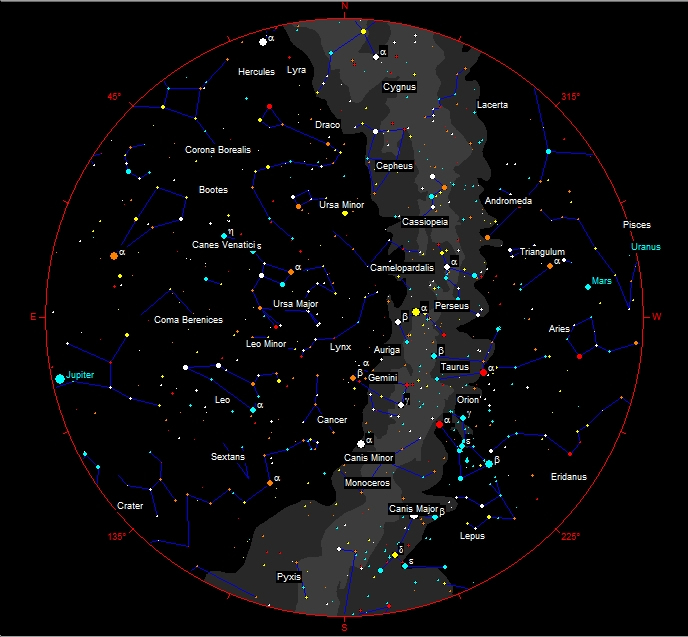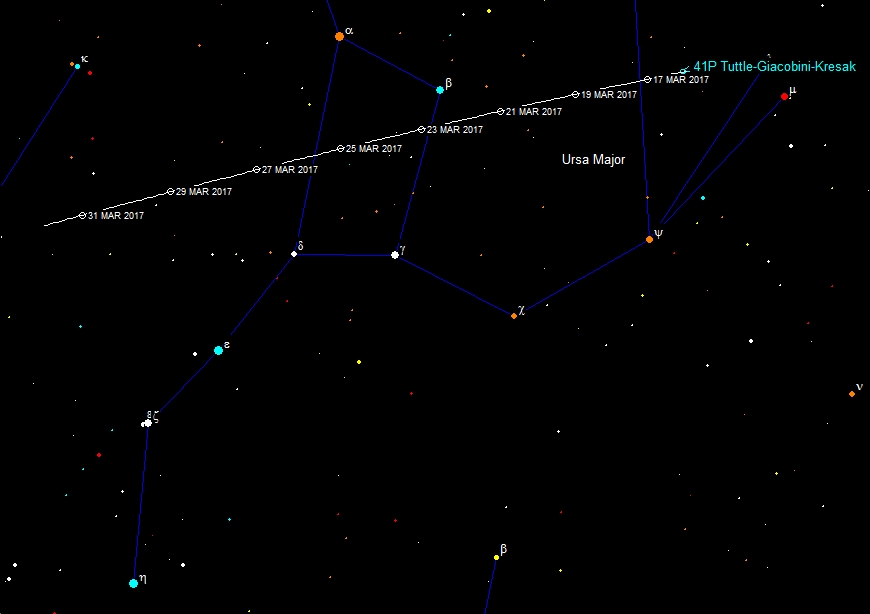Blog
Night Sky - March 2017
March 2017 Night Skies
For the past months Venus has been dominating the SW skies, but during March, the Planet will slip quickly towards the Western horizon, setting around 1 hour after the Sun by the 20th and vanishing from the evening sky just five days later, only to quickly reappear by the month end in the morning skies, rising around an hour before the Sun.

Before it disappears from view, Venus will be joined in the low Western skies by Mercury and the brighter Venus can be used as a handy marker to locate the new interloper. Setting some 40 mins after the Sun on the 14th March, Mercury will be roughly midway between the horizon and Venus. Around the 20th, Mercury will be some 7 degrees to the left of Venus but at a similar height from the horizon, but by month end, the two planets have parted company with Mercury setting almost two hours after the Sun. An interesting photo opportunity to photograph Mercury with a wafer thin Moon exists on the 29th March, looking West some 40 minutes after Sunset…… weather permitting!!!!
Mars remains visible, a little more to the South of this pairing but is becoming less obvious amongst the stellar background. Only the reddy hue of the planet gives it away in binoculars and even in a telescope, is quite disappointing to view having fast its best viewing opportunity for this session. Next year promises to be excellent for Mars observers, as the Earth and Mars pass each other closer than they have since 2003.
As mentioned last month, Jupiter is now rising in the SE skies by mid evening and the four brightest Jovian moons - Io, Europa, Ganymede and Callisto – are easily visible in tripod mounted binoculars as they perform their orbital ballet around the planet. A little below Jupiter is the bright star Spica, and this optical lineup will be joined by the Moon on the 15th March.
Saturn is the final planet on show this month, visible low in the SE some hours before Sunrise. Tripod mounted binoculars will just show a hint of the famous ring system around the planet although this is so much better when viewed through telescopes.
Nothing to really look forward to in the way of meteor showers this month, just the normal and unpredictable sporadics, burning up in their fiery dash through our atmosphere.
Keep an eye on the Northern horizon though as March and September are historically “good times” for auroral activity, although this is very much dependant on the Sun. Our Sun goes through an 11 year cycle of Sunspot activity, as anyone who safely observes the Sun will know, and we are well on our way down towards the predicted Solar Minimum due around 2019 to 2020. This Sunspot activity is not the sole cause of auroral activity but does play a role, so fingers crossed….. we may just get as lucky as we did so last year.

Our final object of interest this month will also involve an element of luck. It’s a Comet, one of those notoriously difficult astronomical bodies to predict just how bright they will appear in the night sky. The comet in question is designated 41P Tuttle-Giacobini-Kresak, which orbits the Sun every 5.46 years. On this return, the Comets closest approach to the Sun, a time when it should be at its brightest, coincides almost exactly with its closest approach to the Earth at a "mere" 13.5 million miles away. The Comet should be visible in binoculars …… once the bright Moon is out of the way…… from Mid March onwards, with the possibility of it becoming a naked eye Comet around the period of closest approach a couple of days either side of 31st March. The other bonus with this return is that the Comet passes through an area of the sky that almost everyone can recognise, namely the Plough. During this time of the year the Plough is visible looking towards the Eastern sky in the evening, standing vertically as shown in the attached sky chart. The position of 41P is marked every two days while passing through this region and in binoculars, should be seen as a small fuzzy haze of light. Telescopes and photographs may well show the distinctive greenish hue associated with comets, and may possibly detect a tail to the Comet. Only time will tell on this point however. So…… Clear Skies and good hunting!
Supplied by MidWales Astronomy www.midwalesastronomy.cymru/
